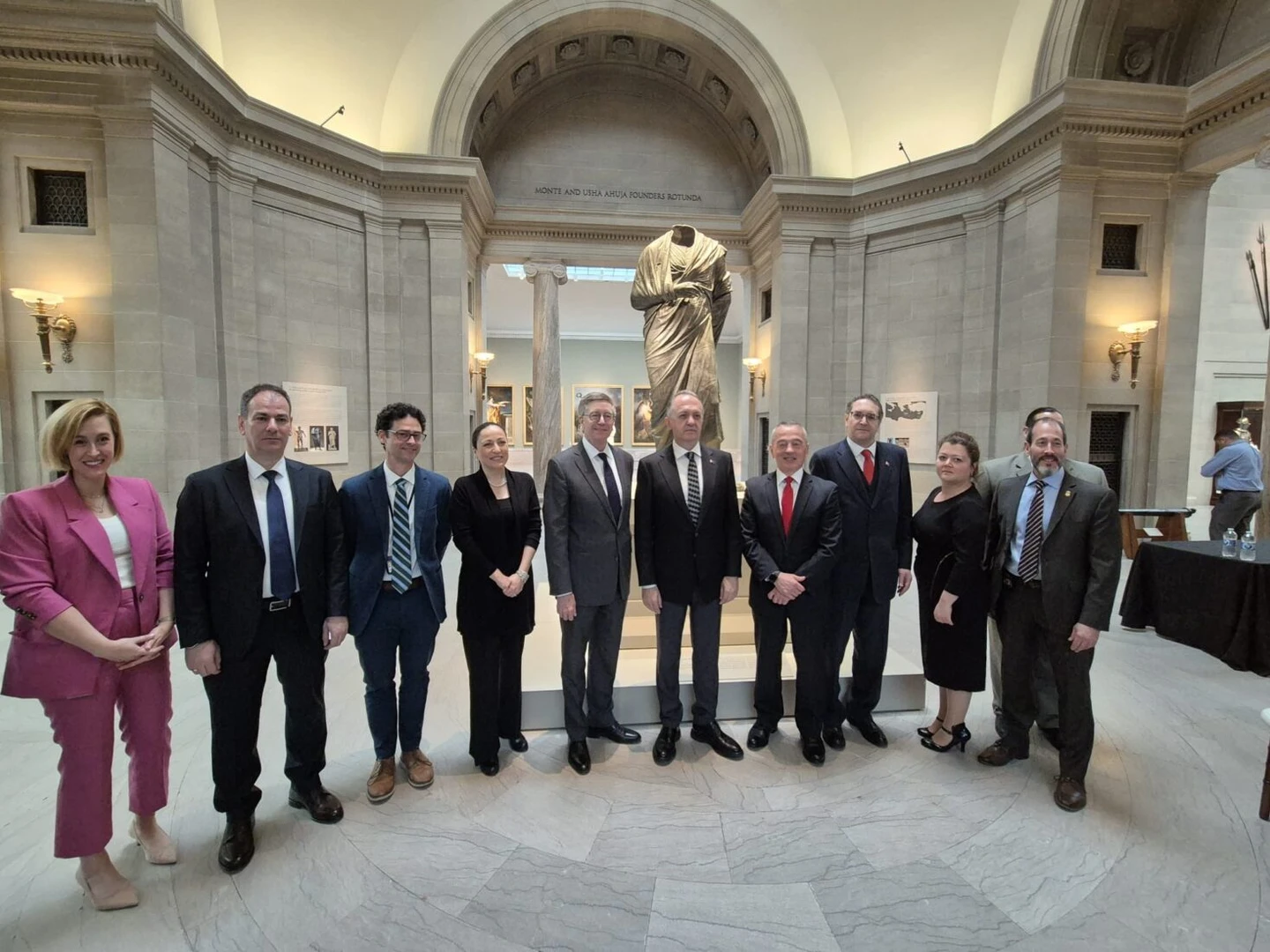Roman emperor Marcus Aurelius’ statue returns to Türkiye after 65 years
 Deputy Minister Gokhan Yazgi delivers a speech at the ceremony where the bronze statue of Marcus Aurelius was returned to Türkiye at the Cleveland Museum of Art in the U.S., April 14, 2025. (Photo via Ministry of Culture and Tourism)
Deputy Minister Gokhan Yazgi delivers a speech at the ceremony where the bronze statue of Marcus Aurelius was returned to Türkiye at the Cleveland Museum of Art in the U.S., April 14, 2025. (Photo via Ministry of Culture and Tourism)
After a decadeslong legal, diplomatic and academic struggle, the bronze statue of Roman Emperor Marcus Aurelius has officially returned to Türkiye. Once smuggled abroad in the 1960s from the ancient city of Boubon in southwestern Türkiye, the statue was handed over during a ceremony at the Cleveland Museum of Art in the United States.
Türkiye’s Deputy Minister of Culture and Tourism Gokhan Yazgi announced the return on social media, noting that the artifact had finally come back to the land it truly belongs to.
“This unique bronze statue, which portrays Emperor Marcus Aurelius as a philosopher and was illegally taken from Boubon Ancient City in the 1960s, has officially been returned to Türkiye,” Yazgi stated. “After nearly 65 years of scientific, legal, and diplomatic efforts, the statue is finally coming home to the soil of Anatolia.

Special exhibit before its return
Before being flown back to Türkiye, the statue will remain on display at the Cleveland Museum of Art for three months as part of a special exhibition. In July, it will be exhibited in its original cultural context in Türkiye, marking the end of its long journey.
Yazgi emphasized that the statue’s homecoming represents not only a victory for Türkiye’s cultural heritage but also a broader triumph for historical justice.

Who was Marcus Aurelius?
Philosopher emperor and the final ruler of Rome’s golden age
Born in 121 A.D. into an aristocratic Roman family, Marcus Aurelius ruled the Roman Empire from 161 to 180 A.D. Known as a devout Stoic philosopher, he is often remembered as the last of the so-called “Five Good Emperors” and as the final ruler of the Pax Romana—a two-century-long era of relative peace and stability in the Roman Empire.
He served as Roman Consul three times and was closely connected to earlier emperors such as Trajan and Hadrian. After his father’s early death, Marcus was raised by his mother and grandfather and received an elite education in Latin and Greek from renowned scholars like Herodes Atticus and Marcus Cornelius Fronto.
He married Faustina, the daughter of Emperor Antoninus Pius, and was eventually adopted by him as heir. Marcus rose to power alongside his adoptive brother Lucius Verus after Antoninus died in 161.

War, plague, and philosophy
Marcus Aurelius faced pandemics and invasions with wisdom and resolve
The emperor’s reign was marked by constant warfare and crisis. In the East, the Romans clashed with the Parthian Empire and rebellious Armenian forces. In the North, Marcus fought the Germanic Marcomanni, Quadi, and Sarmatian tribes along the Danube frontier. These long and brutal campaigns were compounded by economic challenges, including the debasement of the Roman currency.
Meanwhile, the Antonine Plague, possibly a form of smallpox, ravaged the empire and claimed the lives of 5 million to 10 million people. Marcus himself is believed to have contracted the illness, and he died in 180 A.D., succeeded by his son Commodus—a controversial transition that continues to divide historians.
A lasting legacy in philosophy and politics
Despite the turmoil of his reign, Marcus Aurelius remains revered not only as a military leader but also as a moral thinker. His personal philosophical writings, compiled in the book Meditations, are considered a cornerstone of Stoic philosophy and continue to inspire leaders, writers, and scholars to this day.
In Rome, the Marcus Aurelius Column and his iconic equestrian statue still stand as enduring symbols of his legacy and the enduring ideals of wisdom, duty, and resilience in leadership.



